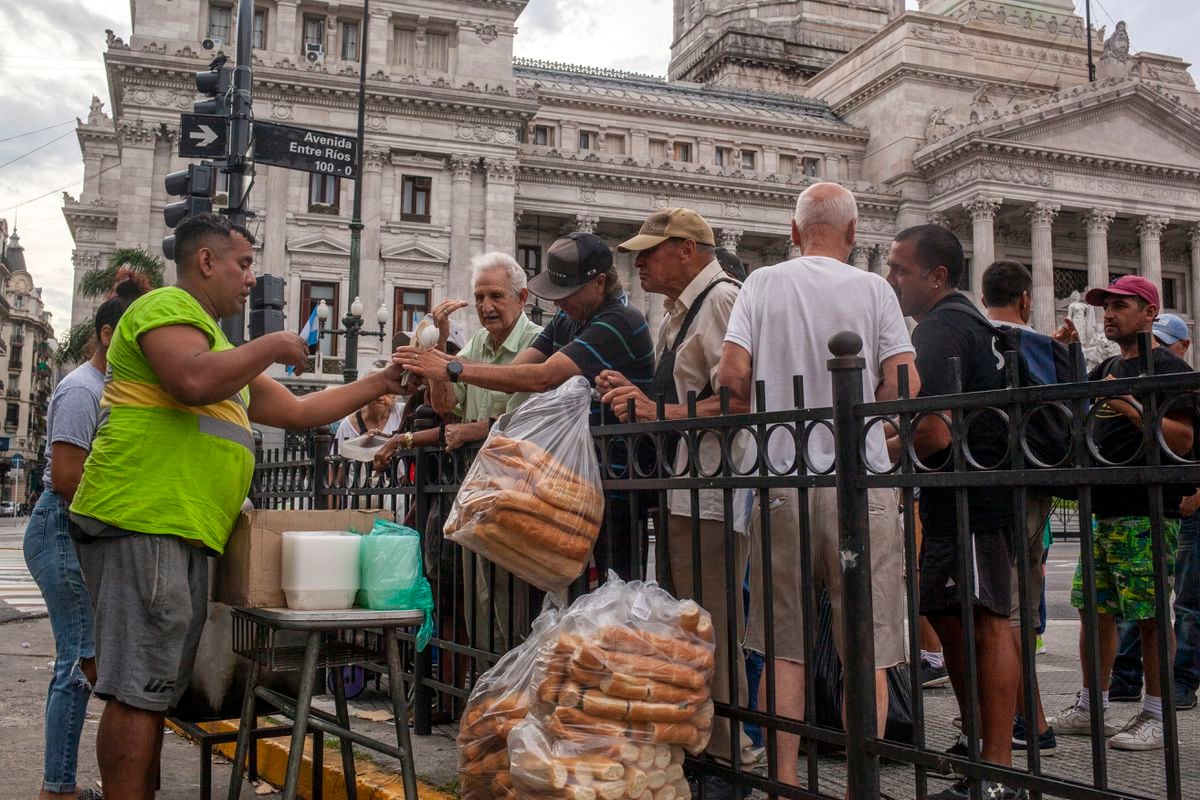The exterior of the New York Stock Exchange, on June 29. Julia Nikhinson (AP)
Faced with rising interest rates in global markets, Latin American governments are increasingly turning to multilateral organizations and their local markets for financing.
The issuance of sovereign bonds abroad fell by half, according to data from the credit risk rating agency Fitch Ratings.
The region has issued just $20 billion of bonds in the first half of this year, compared with $37.5 billion in the same period last year.
Latin American sovereign issuance has been among the largest among emerging markets in recent years, analysts Shelly Shetty and Christopher Dychala note in a report published Tuesday, but this has changed so far this year.
"The lower financing needs and greater dependence on domestic markets and multilateral creditors in the context of more restrictive and volatile international financial conditions underpin the fall," says the report.
"Fitch expects issuance in the second half of 2022 to remain constrained as developed market interest rates rise to deal with high inflation."
Last week, the US central bank, the Federal Reserve, increased its reference interest rate for the fourth consecutive month to deal with the inflation that afflicts much of the world.
Central banks in Latin America started their own upward cycles since last year, which has increased the cost of financing.
Over the past decade, many emerging markets have enjoyed lower interest rates abroad than at home.
This year, fiscal deficits stopped growing, in part due to strong gross domestic product growth from the recovery from the pandemic, as well as high commodity prices and the withdrawal of covid-19 support.
This is reducing borrowing needs compared to 2021.
However, governments have introduced fiscal and spending measures to varying degrees to mitigate the impact of high fuel and food prices, thereby reducing the net fiscal benefit.
“Higher borrowing costs at a time when the debt burden has increased across the region highlights vulnerability to tightening external financing conditions.”
Among the largest bond issues so far this year, Mexico stands out, one of three countries with investment grades along with Panama and Chile in the Fitch table.
Mexico placed 1.8 billion euros of debt and 3 billion dollars in the markets of Taiwan and Luxembourg, which were before the Russian invasion of Ukraine.
The sub-investment grade sovereigns were from Paraguay, Bolivia and the Dominican Republic, countries that returned to the markets this year.
In the case of Bolivia, the country had not issued bonds abroad since 2017 and achieved it this year by placing 850 million dollars to refinance the next maturities.
Argentina, Ecuador and El Salvador continue to be excluded from the international capital markets and Fitch highlights the risk of the Central American country.
“A maturity of $800 million in debt in January 2023 is a key risk for El Salvador, although the government has recently announced its intention to repurchase bonds,” Fitch analysts say.
Argentina, for its part, “continues to be mired in political, economic and financial market instability.
Debt service on restructured hard-currency bonds is low until 2024, but will increase markedly from 2025 onwards.
Bond rates in Ecuador have risen this year, Fitch notes, even though short-term debt maturities are manageable and the program it signed with the International Monetary Fund reduces financing risk.
"But the higher rates reflect the growing uncertainties of social protests," say specialists.
Unlike other emerging regions in the world, Latin America has seen net inflows of financial capital in the first half of the year.
This is due to the relative distance of the war in Ukraine and the early cycle of monetary tightening.
“But this outperformance will likely be tested as the region slows and commodity prices recede and external financing conditions tighten further,” Shelly and Dychala warned.



/cloudfront-eu-central-1.images.arcpublishing.com/prisa/IOQ5LVJEOFAEZHGFMYWVXLFURI.jpg)
/cloudfront-eu-central-1.images.arcpublishing.com/prisa/ZU5KUJFBSRGVVM2SXJTZBZP3XI.jpg)

/cloudfront-eu-central-1.images.arcpublishing.com/prisa/GSAG3AFDE5GZ7CR5RU42LT63UM.jpg)
/cloudfront-eu-central-1.images.arcpublishing.com/prisa/ZUQZWVIIFJBVBIC3WEJ4LBUFDM.jpg)

/cloudfront-eu-central-1.images.arcpublishing.com/prisa/RHYRDMQQ7BG5JOUSKAXBLKE6YE.jpg)





